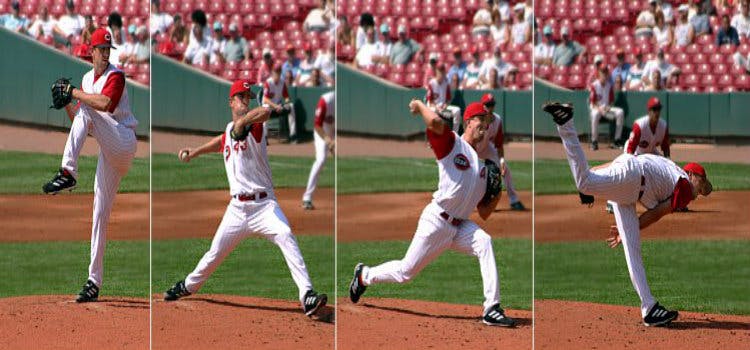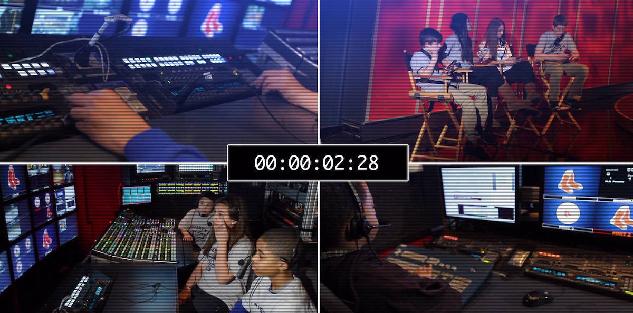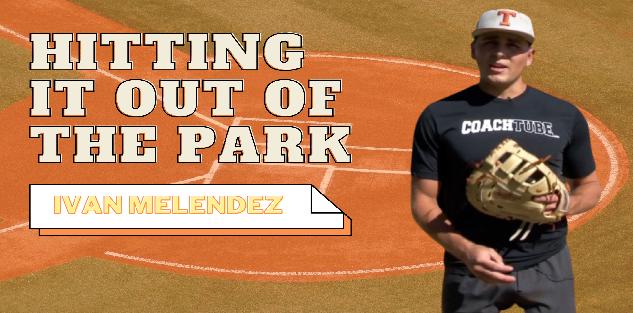Featured courses
- Understanding The Shift by Brandon Ogle
- Two Drills to Improve Outfield Movement and Communication by Grant Young
- The Ultimate Resource For Coaching Youth Baseball by Jackson Chlebowy
- Become a Master at Bunting by Brandon Ogle
- 5 Reasons Why There Is More To Good Base Running Than Just Speed by Brandon Ogle
- Three Injury-Prevention Tips For Your Offseason Pitching Program by Grant Young
- How to Teach Hitting to the Next Generation by Grant Young
- Developing Defensive-Minded Baseball Catchers by Grant Young
- 3 Baserunning Tips to Score More Runs in Baseball by Grant Young
- 5 Outfield Drills to Work on in Season by Alec Burris
- Keys For Scoring More With Runners on First and Third Base by Grant Young
- How to Develop Your Game to Become a Five-Tool Player by Brandon Ogle
- 3 Coaches Share the Keys to Running Baseball Practice the Right Way by Grant Young
- Four Drills to Sharpen a Baseball Hitter’s Vision at the Plate by Grant Young
- Four Quotes to Hit Better With Two-Strikes by Grant Young
- Four of Former MLB Pitcher Juan Nieves’ Movement-Based Pitching Drills by Grant Young
- Two Tips For Developing an Elite Baseball Bullpen by Grant Young
- Overcoming the Four Challenges of Indoor Baseball Practices Because of Weather by Grant Young
- Three Tips to Make Your Baseball Team Mentally Tougher by Grant Young
- Three Priceless Philosophies to Motivate Your Baseball Team by Grant Young
- Three Offseason Baseball Drills to Simulate Competition by Grant Young
- Three Baseball Offseason Strength and Conditioning Essentials by Grant Young
- Important Ways to Improve Your Baseball Team’s Baserunning by Grant Young
- Three Ways to Perfect Hitting Mechanics From an MLB Icon by Grant Young
- Catchers can influence pitchers...for bad or good by Drew Johnson
- Throwing Strikes and Playing Good Defense Equals Wins by Jose Ortiz
- Legendary Indiana Head Baseball Coach Bob Morgan’s Offensive Theory by Grant Young
- Tennessee Head Baseball Coach Tony Vitello on How to Practice Baserunning by Grant Young
- Three Great T-Ball Drills For Youth Baseball Players by Grant Young
- How to Manage a Baseball Pitching Staff by Grant Young
- Three Uncommon Tips to Become a Better Hitter by Grant Young
- How a Baseball Coach Can Develop Strike Throwers by Grant Young
- Drills to Develop Elite Baseball Outfielders by Grant Young
- Baseball Training Exercises to Strengthen Arm and Bat Speed by Grant Young
- How to Use Bunting to Score More Runs by Grant Young
- How To Build An Elite Baseball Infielder by Grant Young
- Three Drills to Improve Your Baseball Team's Infield Play by Grant Young
- Three Keys to Curating a Pitching Staff’s Success by Grant Young
- 3 Techniques to Develop a Baseball Player’s Hitting Approach by Grant Young
- How to Cultivate Confidence Within Your Pitchers by Grant Young
- 5 Every Day Drills To Help You Become A Better Catcher by tyler Linderman
- How to Throw A Curveball by Brandon Ogle
- How to Assemble a Lock-Down Bullpen by Brandon Ogle
- How to Throw a Sinker by Brandon Ogle
- How to be a Smart Baserunner by Brandon Ogle
- Improving a player's slugging average by Phillip Woolgar
- The 8 Fundamentals of Pitching by Drew Johnson
- How to Throw a Deceiving Changeup by Brandon Ogle
- Step Up Your Outfield Defense With These Three Drills by Jose Ortiz
- 8 Baseball Drills Every Player Should Practice by Drew Johnson
- How To Become An Elite Defensive Outfielder by Tyler Linderman
- 5 Tips For Crushing A Curveball by Johnny Grassi
- LEGENDS FOR YOUTH INCLUSION BASEBALL CLINIC by Phil
- Fourteen Ways To Turn A .300 Hitter Into A .210 Hitter by Jay P. Granat, Ph.D.
- How To Become The Ideal Leadoff Man by Brandon Ogle

The 8 Fundamentals of Pitching
- By Drew Johnson
If you don’t have a reliable arm on the mound, every game is going to be difficult to win.
You might not have ever been a pitcher, but that doesn’t mean you can’t coach the proper mechanics and techniques to help your hurlers improve and stay healthy.
Help your pitchers master these 8 fundamentals of pitching, and you’ll watch your team’s ERA drop and their confidence skyrocket.
Number 1: Grip
Let’s start with the basics: how a pitcher grips the ball can dictate accuracy, movement, and speed.
For most youth pitchers, you’re going to want to stay away from throwing curveballs, so start them off with a 4-seam fastball, a 2-seam fastball (which will give you more movement than the 4-seam) and some sort of a change up.
Remember: a grip doesn’t mean a squeeze. Your players should have a comfortable, strong grip, but they shouldn’t be getting a forearm workout in!
Number 2: Arm Angle
Let’s kill this misconception: there’s not one arm angle that’s perfect for every pitcher.What’s important to remember here is that each pitcher should have his own consistent and natural arm angle.
●Using a consistent arm angle allows players to better control and utilize their pitches. It’s simple: if they know how a “good pitch” feels and how the ball is going to move, they’ll turn into a better pitcher. If their arm angle is always changing, it will be much tougher for them to find consistency… and the strike zone.
●A natural arm angle is even more important. By changing how a kid is throwing, a lot of times you’re going to be putting him in more risk for an arm injury.
Not every pitcher throws the same way! There are may examples if you just watch any MLB game.
We can’t stress this enough:
Coaches, do NOT force arm angles to change!
Fix the other mechanics of a pitching motion, and allow the pitcher to throw the ball naturally.
Number 3: The Windup
Just like a batter’s stance, the most important aspect of a pitcher’s windup is comfort. If Hideo Nomo can be successful with his wild windup, you can be sure that there is no perfect windup.
Aside from comfort, there is one similarity that every successful windup has: balance.Even Nomo was balanced all the way through his windup. If you start off-balance, you’ll end off-balance. If you end off-balance, you’ll never be able to locate.
Number 4: The Pivot
As the windup concludes, the real pitching motion begins.
To finish the pitching motion properly, you have to start with a good, strong pivot. At the pivot, the back foot becomes parallel with the pitching rubber, and gives the pitcher a strong foundation off which to throw. The pivot should leave your pitcher in an athletic position, with his knees bent, and with his lead hip aimed towards the plate. His hands are still together, and he’s preparing to lift his leg to drive to the plate.
If your pitcher is throwing from the stretch, the pivot should be his first position after taking his sign.
Number 5: The Leg Lift
Now that your pitcher has prepared his grip and readied himself for the delivery, he can begin to drive toward the plate.
As the pitcher begins his leg lift, here are some key things to remember:
●Keep the hips completely closed- The pitcher’s hip bone should be pointing to the plate. The body will follow the hip, and the ball will follow the body.
●Lift the knee- The purpose of the knee lift is to generate force “behind the ball.” When lifting the knee, have the toe point down very slightly, but without flexing the calf.
●Hands- Keep the hands in the middle of the body for optimal balance. If your pitcher is more advanced, his hands can drift towards his back leg slightly- giving him a little extra forces.
●Eyes- Stay focused on the catcher’s mitt. Your head will help lead your body (and the ball) to the strike zone.
●Stay balanced- You don’t want fall flat on your face, do you?
Number 6: The Stride
The stride is the most important fundamental in a pitching delivery. A good stride can give a pitcher extra velocity and better location, but a poor one will completely throw off a game plan.
Here are the basics:
●Length- In general, the stride length should be about 80-90% of your pitcher’s height. Overextension will lead to bad timing and control problems, and underextension will lead to the ball staying up in the zone and a decrease in velocity.
●Hands- The pitcher’s hands will come apart, with his throwing arm being extended back and his glove hand aimed towards the plate.
●Hips- The pitcher’s hips are still closed during the stride. As their front foot lands, the throwing motion will demand they the explode open, which will generate velocity.
●Timing- The biggest problem most young pitchers will have is trying to “rush” through their delivery. Even through the stride, the upper body should remain in synch with the lower body- with the head in line with the belly button.
Number 7: The Delivery
At the end of the stride, the pitcher’s front foot will land pointed in the direction of the catcher.
As he lands, his hips and his throwing arm will begin to open- forcing the core of the pitcher’s body to face towards the plate.
The back foot will follow the hips and the arm, causing the foot to come of of the ground around the time the pitch is released.
The glove hand should come into the body of the pitcher, allowing extra velocity and keeping the pitcher’s momentum going towards home plate.
Number 8: The Follow-through
A pitcher’s follow-through is important for velocity, control and for fielding his position. A great follow-through should continue the allow the pitcher’s arm to continue the path it took to release the ball, helping him “finish” over his knee.
Remember how we mentioned that the back foot will follow the hips and the arms and come off the ground? This helps during follow-through, because it allows the pitcher to land in a fielding position just in case a ball is hit back at him.
So what now?
Now that you’ve got the basics, check out this in-depth video course on pitching mechanics.
Continue to watch the masters of the craft in the MLB, and pay special attention to the pitcher’s mechanics during every pitch. You’ll start to notice that every pitch consists of these same fundamental elements.
Master the fundamentals. Master your pitch.



